I’m down in Florida at Kennedy Space Center to see a space shuttle launch. In all the years of following space activities, I’ve never actually seen a launch. We tried back in December 2007, but that trip was foiled by problems that it eventually took them 6 weeks to fix.
So, it’s another winter later and I’m trying again. I only try to do this in winter because the weather tends to be drier and more stable (e.g. no scrubs due to thunderstorms). This is the STS-119 mission, which has the Discovery taking the last truss (backbone) segment up to the space station. There’s only 9 shuttle missions left, and so the chance of seeing a launch is rapidly dwindling. By 2010 or 2011 it’ll all be over.
By way of work, I have a press pass that gets me into the press site at Kennedy, right next to the VAB and as close to the launch as any human being is allowed to be — except for the 7 people strapped into the shuttle itself.
Try #1
 On the day before the scheduled launch, I went in to look around and check things out. After a few hours of lounging around the press building and getting lunch in the cafeteria, I set up the new telescope (which I’ll write about soon) at the edge of the turning basin. This first picture shows it with the large countdown clock in the field in the background, and the large silver boat is the covered barge that they used to transport the large orange fuel tank from the factory in New Orleans.
On the day before the scheduled launch, I went in to look around and check things out. After a few hours of lounging around the press building and getting lunch in the cafeteria, I set up the new telescope (which I’ll write about soon) at the edge of the turning basin. This first picture shows it with the large countdown clock in the field in the background, and the large silver boat is the covered barge that they used to transport the large orange fuel tank from the factory in New Orleans.
All afternoon the STA was doing landing simulations, probably with the two pilots of the space shuttle, practicing for the next day’s launch. It would coming roaring down at a steep angle, with the engines in reverse, simulating the space shuttle’s aggressive glideslope, touch down, and then roar right back up to 40,000 feet to go do another pass. I was able to follow it with the scope and manual slewing.
 At one point a bird fight erupted over the water. About a half-dozen ospreys were quite upset with a bald eagle. Eventually one of the ospreys got a good dig into the eagle’s back and he hauled ass out of there. I attempted to take pictures, but my camera only got one picture before declaring that it had weak batteries, oops it meant dead batteries, and quickly going dead. Thanks Canon! In this one picture, you can see the eagle at the left, turning hard just below the tree line, but you can’t see any ospreys (the bird on the buoy is just a heron or something watching the show).
At one point a bird fight erupted over the water. About a half-dozen ospreys were quite upset with a bald eagle. Eventually one of the ospreys got a good dig into the eagle’s back and he hauled ass out of there. I attempted to take pictures, but my camera only got one picture before declaring that it had weak batteries, oops it meant dead batteries, and quickly going dead. Thanks Canon! In this one picture, you can see the eagle at the left, turning hard just below the tree line, but you can’t see any ospreys (the bird on the buoy is just a heron or something watching the show).
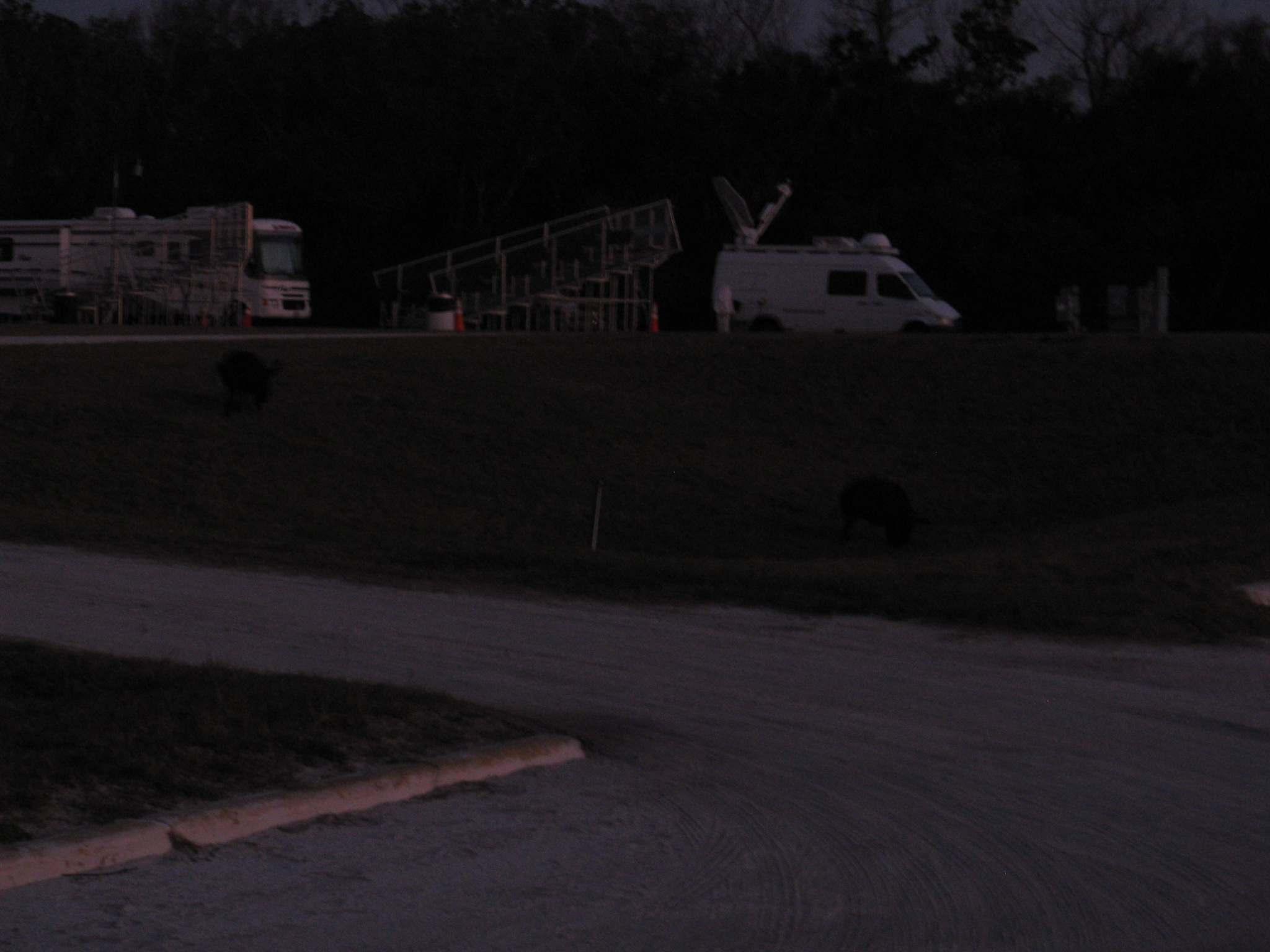 As dusk fell, feral pigs came out of the brush to sniff around on the grass. One of the reporters here said he’s seen bobcats, and once almost stepped on a rattlesnake.
As dusk fell, feral pigs came out of the brush to sniff around on the grass. One of the reporters here said he’s seen bobcats, and once almost stepped on a rattlesnake.
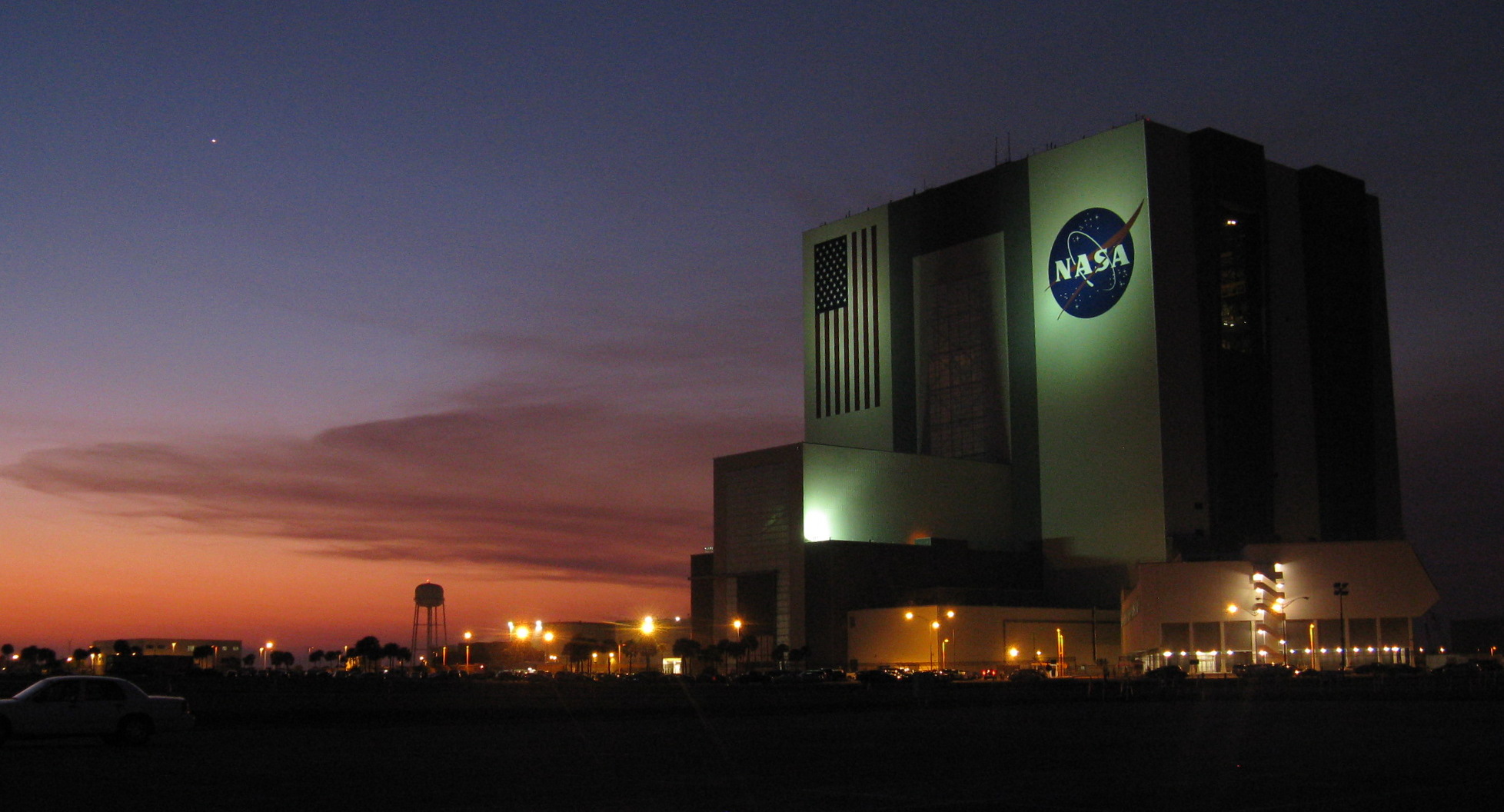 On Wednesday, I arrived at midday ready for a long day of countdown and launch monitoring. However at around 2:30pm (well into the countdown but still 7 hours to go) the scrubbed due to a fuel leak. After moping around the press site for a while I pulled out of there and went to dinner with some work folks. As of right now the word is that they will try again on Sunday. I was planning on driving back home on Saturday, but I’m going to tough it out and stay until this launches. Yes, extending my vacation in Florida, it’s rough!
On Wednesday, I arrived at midday ready for a long day of countdown and launch monitoring. However at around 2:30pm (well into the countdown but still 7 hours to go) the scrubbed due to a fuel leak. After moping around the press site for a while I pulled out of there and went to dinner with some work folks. As of right now the word is that they will try again on Sunday. I was planning on driving back home on Saturday, but I’m going to tough it out and stay until this launches. Yes, extending my vacation in Florida, it’s rough!
Killing Time
Methods for killing three days in Florida:
 Struggle with decisions like A) go to beach, B) get lunch or C) read book.
Struggle with decisions like A) go to beach, B) get lunch or C) read book.
Work on a tan.
Read Mike Mullane’s book; much of the first part is grating because he’s such a sexist asshole, but he freely admits it and even laments it at times. That aside, this book is an unfliching look inside the world of shuttle astronauts, with everything laid bare including marital tension, office politics, space toiletry, grieving over lost comrades, selfish ambition.

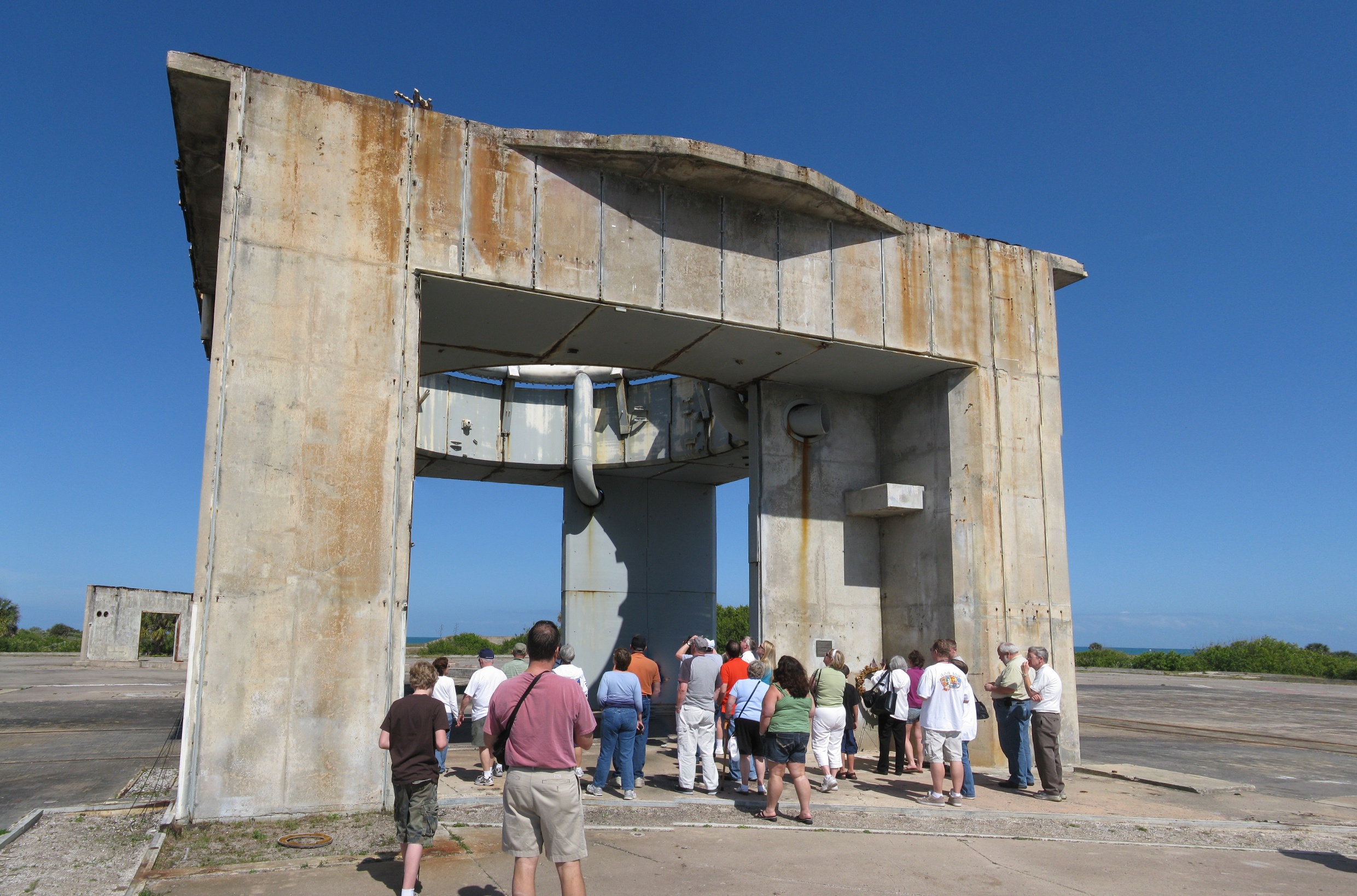 Go on the “Now and Then” bus tour of the old Cape Canaveral launch pads. Ending up at the Saturn V site, which by the end of the day was largely empty, allowing me to get a nice quiet look at the business end.
Go on the “Now and Then” bus tour of the old Cape Canaveral launch pads. Ending up at the Saturn V site, which by the end of the day was largely empty, allowing me to get a nice quiet look at the business end.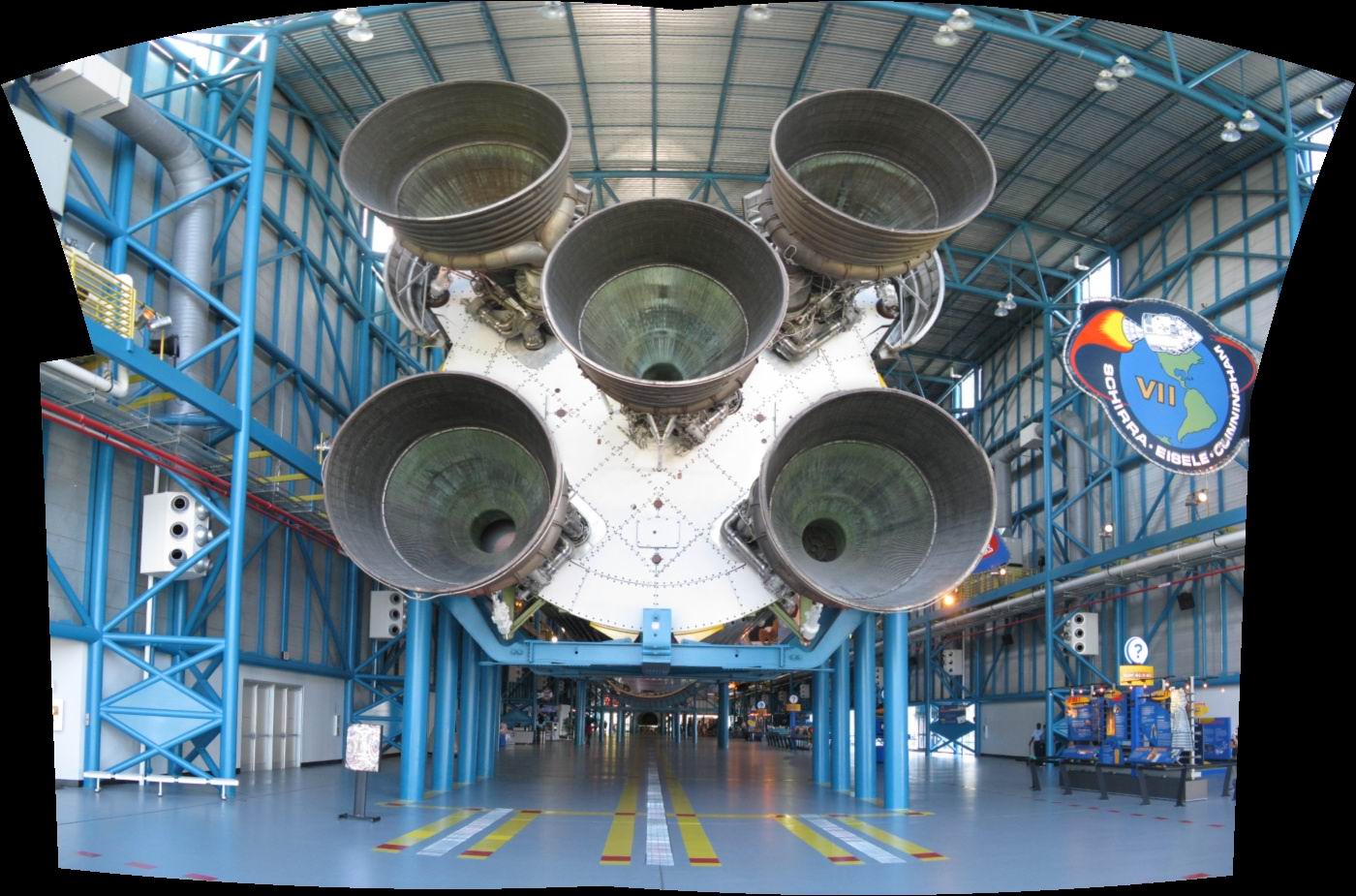
Visit the Astronaut Hall Of Fame, which is interesting enough once you get inside, but the outside entrance and the entrance lobby staff are quite creepy.
Stumble across an air show (e.g. fighter jets) at the Titusville airport.
Troll around the press site, hoping they’ll do a “VIP” tour of the OPF or VAB, like they’ve done in the past in case of scrubs. Alas, not happening, but not for lack of trying (I asked them about 5 times).

Keep up with news of the Atlas launch, which I was hoping they’d fit in before the shuttle launch. Alas, not happening.  Reminded once again of how, during the Dec 2007 trip, I completely forgot about the Atlas launch happening then (after the shuttle scrubbed) and it launched as we were sitting in a theater taking in a movie.
Reminded once again of how, during the Dec 2007 trip, I completely forgot about the Atlas launch happening then (after the shuttle scrubbed) and it launched as we were sitting in a theater taking in a movie.
One day to go!
Try #2
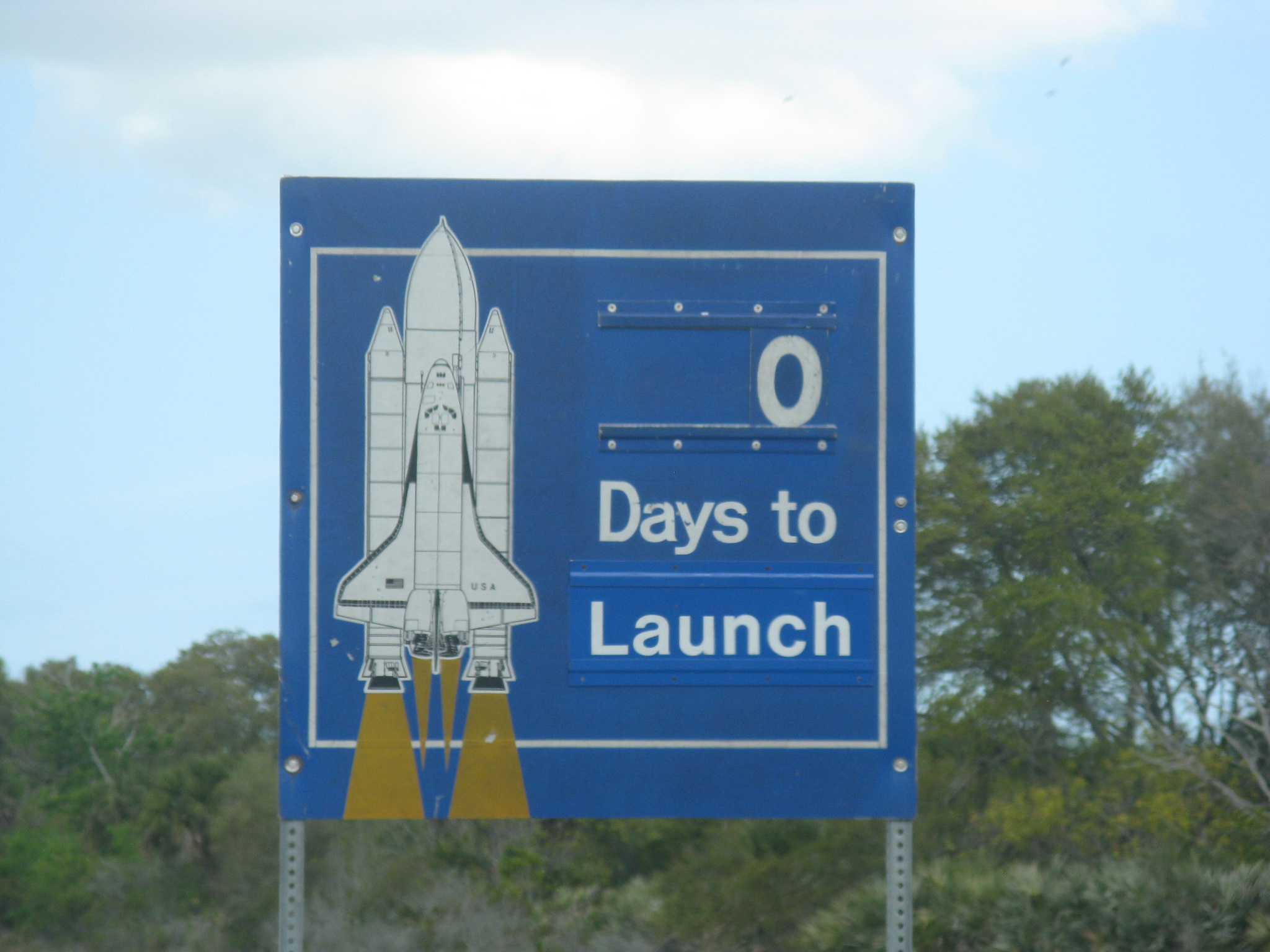 Sunday March 15th. Tanking took place between 10am and 1pm; by 1:30pm we knew they’d gotten past the problem that caused the scrub last Wednesday.
Sunday March 15th. Tanking took place between 10am and 1pm; by 1:30pm we knew they’d gotten past the problem that caused the scrub last Wednesday.
To the right, here are three screenshots from NASA TV:
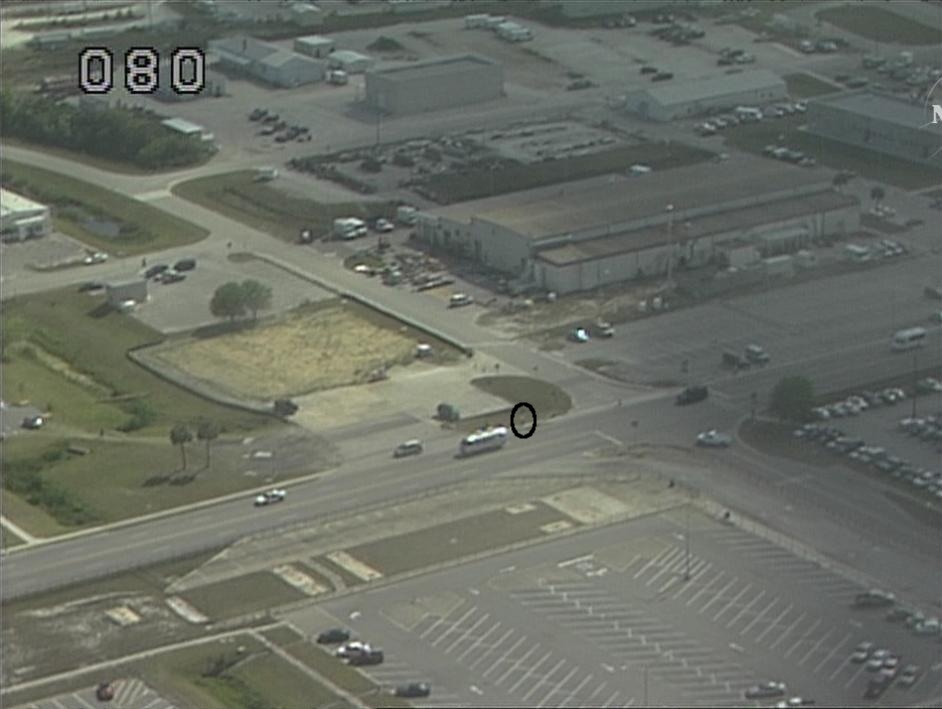 1. Astrovan driving past the VAB, with me on the sidewalk waving at it (circled in photo, click to enlarge). I knew that they would stop around there some place to drop someone off, so I was ready to take pictures and wave at astronauts. Unfortunately, I was standing in the wrong place and the convoy flew right by me!
1. Astrovan driving past the VAB, with me on the sidewalk waving at it (circled in photo, click to enlarge). I knew that they would stop around there some place to drop someone off, so I was ready to take pictures and wave at astronauts. Unfortunately, I was standing in the wrong place and the convoy flew right by me!
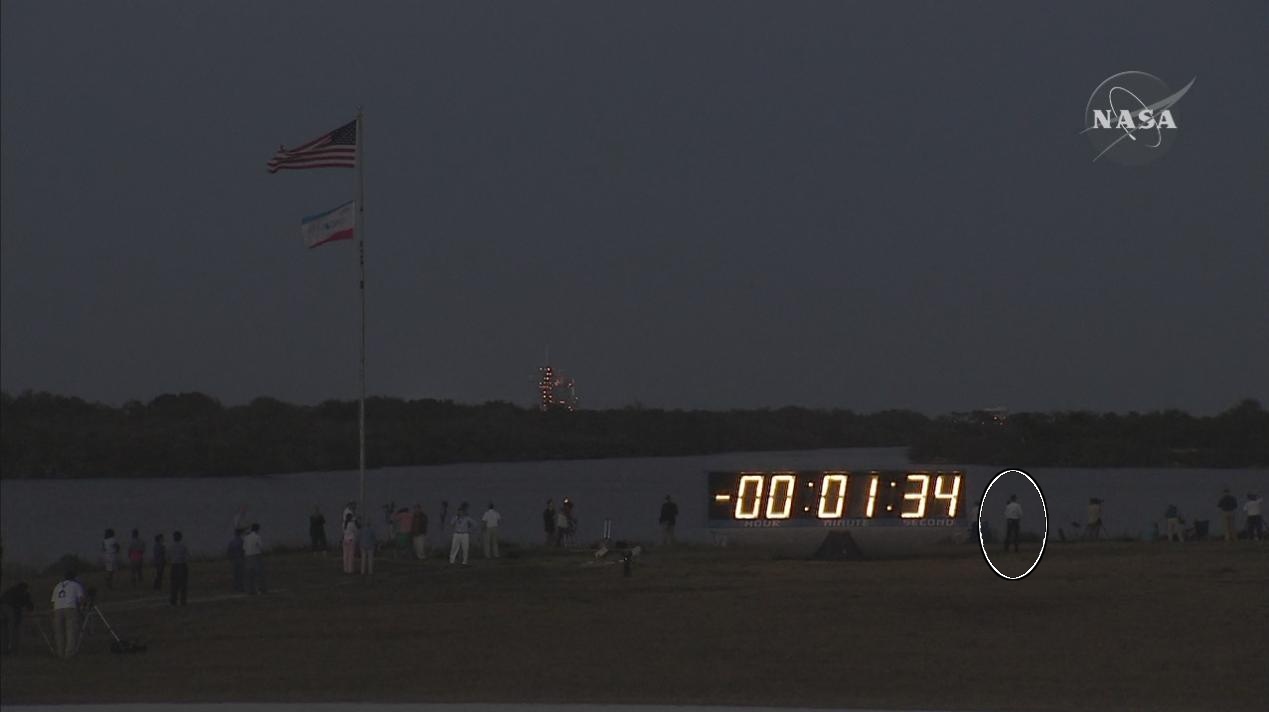 2. View from the press site just before launch, with me standing to the right of the countdown clock. There was a staffer shooing people away from in front of the clock. About 10 feet in front of me was the water’s edge, and that’s where most people were standing and setting up their camera tripods (news photographers).
2. View from the press site just before launch, with me standing to the right of the countdown clock. There was a staffer shooing people away from in front of the clock. About 10 feet in front of me was the water’s edge, and that’s where most people were standing and setting up their camera tripods (news photographers).
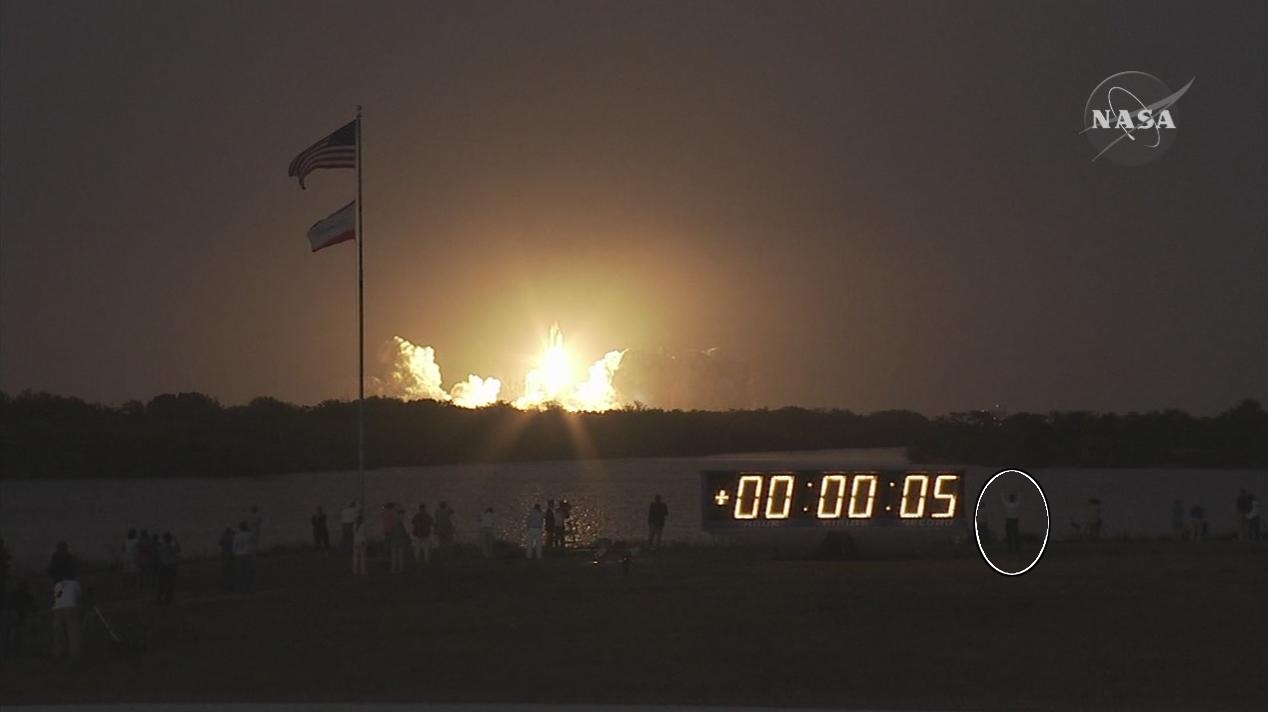 3. View from the press site seconds after launch, with me throwing my arms in the air. 20+ years!
3. View from the press site seconds after launch, with me throwing my arms in the air. 20+ years!
I didn’t distract myself with taking pictures of the actual launch, since there are lots of people already doing that better than I ever could. Ben Cooper always has the best pictures, so go check out his pictures.
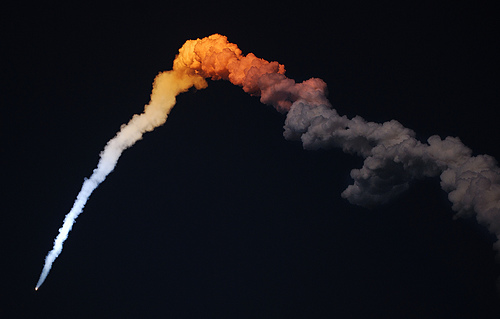 Here’s what two of the rock stars of NASA said at the press briefing after the launch (which I snuck into):
Here’s what two of the rock stars of NASA said at the press briefing after the launch (which I snuck into):
“I can never say enough about these launches. This launch was really special. If you saw it and you saw the clouds and you saw the SRB separation, I don’t think I’ve seen a launch that was as pretty as this one.” — Bill Gerstenmaier
“For the folks who watched this on TV, I really wish you could have been here in Florida. I’ve seen a lot of launches, either as the Test Director or as the Launch Director, and this was the most visually beautiful launch I’ve ever seen. It was just spectacular. When the orbiter and the tank and the boosters got up into the sunlight, the sun had just set about 10 minutes prior, it was just gorgeous. And then at separation we could see the boosters coming back down to earth … We could see the orbiter, from the firing room, 7 minutes into flight. At that point in time the orbiter was somewhere off the New Jersey / New York coast. Just a spectacular night.” — Mike Leinbach
With the dusky post-sunset sky, we had some of the turn-night-into-day effect of a night launch, but then as the shuttle gained altitude it climbed into sunlight again which made for a beautiful grey-to-white-to-orange transition in the plume. The skies were crystal clear and we could see the shuttle out to +7m:30s, which was aaaaalmost all the way to MECO, when I could finally relax. All systems nominal all the way up — a perfect launch.
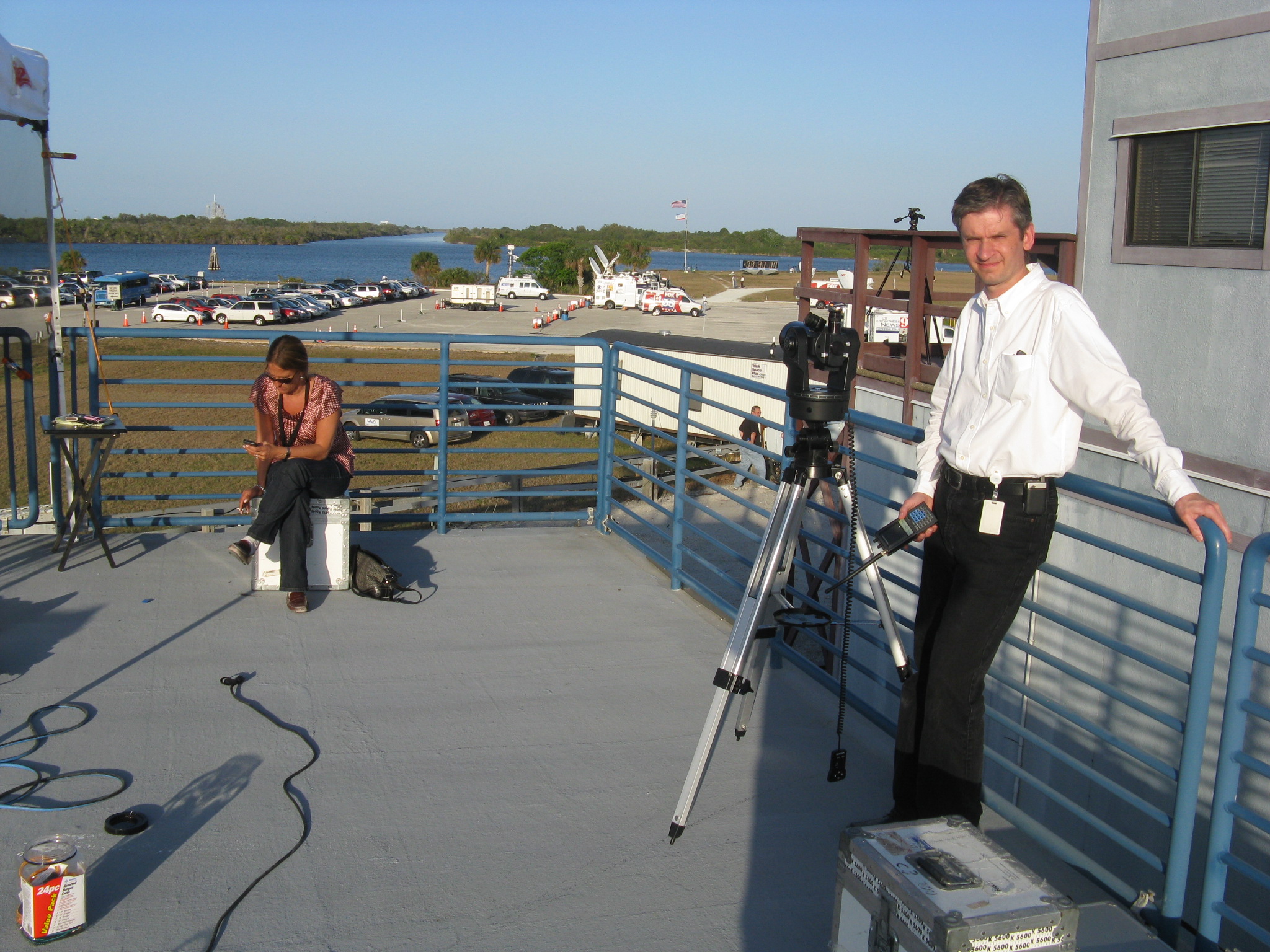 It’s sad that there’s only 8 more of these left, maybe 9 or 10 if they throw money at NASA to extend the shuttle program a little bit more. It’s a beautiful thing to see on the pad and provided us with such gorgeous launches. In 2015 we should start to see Ares I launches, and then in about a decade we may start to see the bigger Ares V launches, which will be similar (two SRBs plus liquid engine stages) but lacking a shuttle on the side.
It’s sad that there’s only 8 more of these left, maybe 9 or 10 if they throw money at NASA to extend the shuttle program a little bit more. It’s a beautiful thing to see on the pad and provided us with such gorgeous launches. In 2015 we should start to see Ares I launches, and then in about a decade we may start to see the bigger Ares V launches, which will be similar (two SRBs plus liquid engine stages) but lacking a shuttle on the side.
After spending a week here, and straining at my leash hoping for a launch, it was sad to be leaving. I don’t know if I’ll ever be back.
On the drive back to Cocoa Beach, Route 528 was a river of light from all the cars slowly making their way back from the viewing sites along that causeway and Port Canaveral and Cocoa Beach. Thousands and thousands of people all come here to see these launches — perhaps hundreds of thousands! It’s nice to see so much support for space flight.
Epilogue
The next morning I checked out of the motel, got in the car, and drove the 500 miles / 8 hours back home. The car didn’t break down on this trip!
On the way I stopped by the Ponce de Leon tracking station. Wayne Hale wrote about this little site in his blog once, and I figured I might as well nerd it up completely and stop by. It’s in the middle of a beachfront state park called Smyrna Dunes, and would make a nice day trip if you live in the area.
The Houston Chronicle has let veteran space reporter Mark Carreau go as part of a layoff there. I met him during my trip to KSC and thanked him for his reliable presence at the briefings and his always good questions (although it’s funny how he always frames them in “I’m just confused” 🙂 ). He did seem concerned about cutbacks — in space/science coverage, at other orgs; he didn’t mention the Chronicle.
And now, two weeks later, the shuttle and her crew have returned to Earth after a successful mission. On paper this wasn’t a particularly exciting mission to the layman, but it represented a milestone that hundreds and thousands (if not millions) of people have been working towards for many many years: a functionally complete space station. Discovery carried up the last of the 4 power generator segments, and that last part makes all the difference in the world, because the excess power now triples the amount of power available for research use (literally, powering more research equipment and supporting more astronauts on orbit doing research). Further, Discovery brought up an absolutely critical piece of equipment (the distillation assembly) that was going to fix the last piece of the new water system, also needed to support a full crew of 6 astronauts including more researchers. And so, in May of this year, a Russian rocket will carry 3 more astronauts up to ISS, and we will finally have the ISS fully staffed for research. Discovery’s STS-119 mission was the final step in 20 years of work to make that a reality.